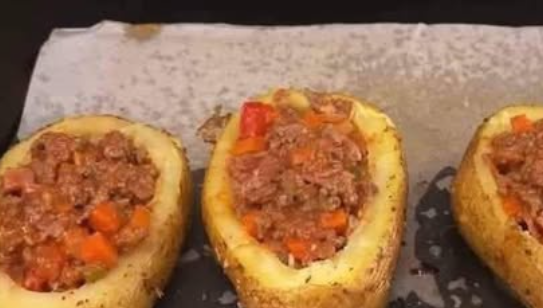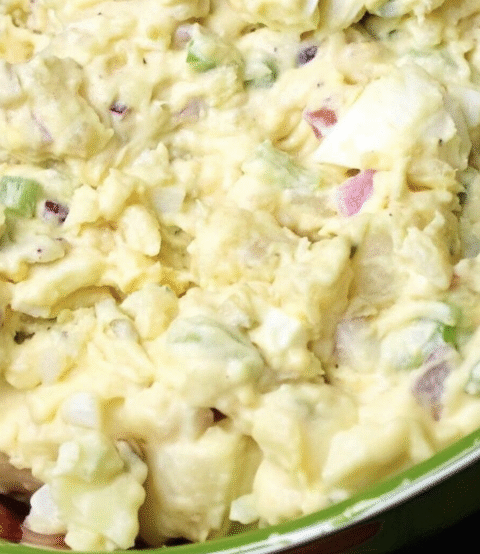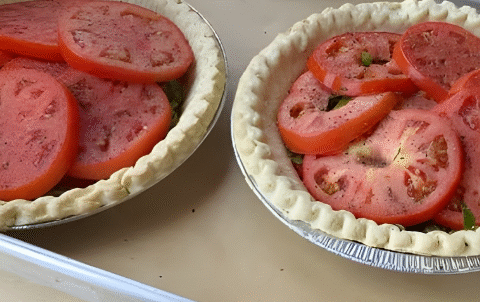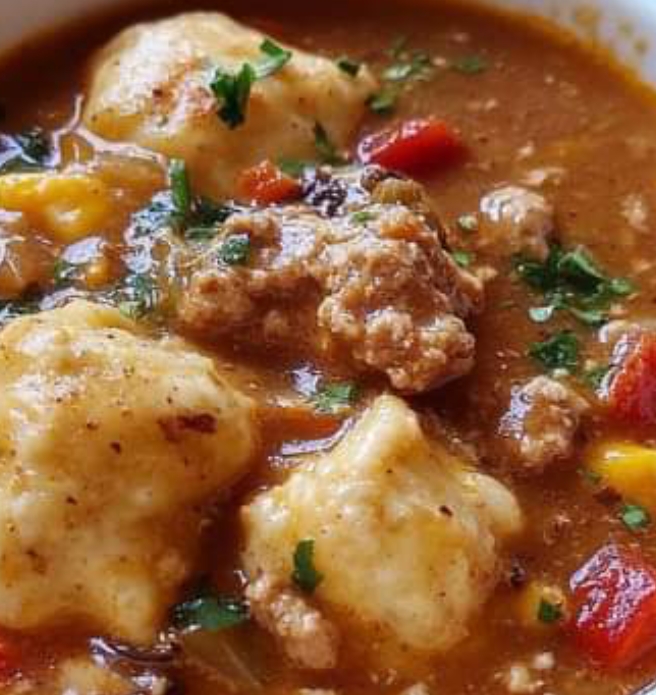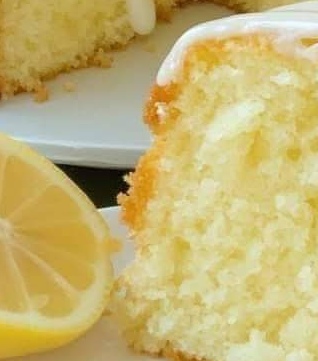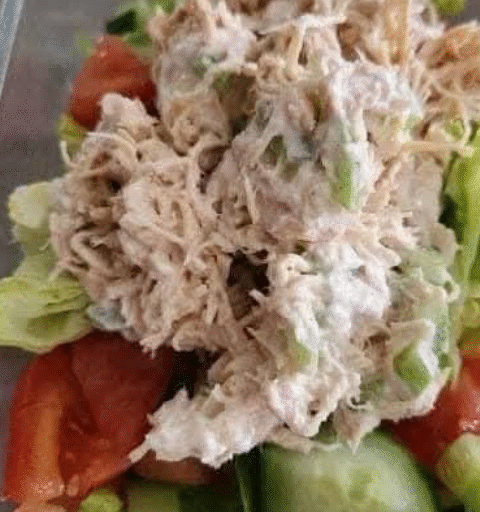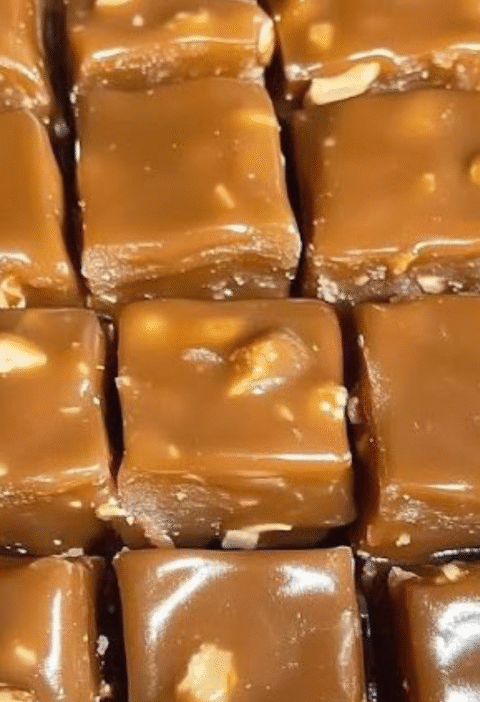Cheesy Beef Stuffed Potatoes — Rich, Hearty & Comforting
If you’re craving a comforting, filling meal that brings together potatoes, savory beef, melted cheese, and bold flavors, this **Cheesy Beef Stuffed Potatoes** recipe is for you. It takes a humble baked potato and transforms it into a full meal by stuffing it with ground beef, onions, cheese, and a creamy sauce. In this comprehensive guide, you’ll find the full ingredients list (in U.S. and metric), technique tips, variations, nutrition data, troubleshooting advice, and FAQs to help you get it right every time.
Why This Recipe Works
Stuffed potatoes are a great vehicle for combining simple ingredients into something substantial and layered. The potato provides texture and a base; beef adds protein and savory depth; cheese and cream tie everything together with richness. Many recipes similar to this exist — for example, **Cheesy Ground Beef Stuffed Baked Potatoes** (Hungry Couple) uses a sauce made with flour, milk, stock, and cheese to envelop beef and onions. :contentReference[oaicite:0]{index=0}
Other recipes, like on Taste of Home, propose mixing sour cream and spices with ground beef to fill baked potatoes. :contentReference[oaicite:1]{index=1} This recipe combines these ideas with a creamy, cheesy sauce for deep flavor and cohesive texture.
What You’ll Get from This Guide
- Complete ingredient list (U.S. + metric) with purpose of each component
- Step‑by‑step method with details, timing, and tips
- Chef insights and common pitfalls to avoid
- Variations, flavor twists, and options for customization
- Nutrition estimates and health considerations
- Storage, reheating, and food safety advice
- Troubleshooting & common mistakes
- 10 FAQs to answer your likely questions
- Serving & presentation ideas to elevate the dish
Ingredients & Their Roles
Basic Ingredients (U.S. / Imperial)
- 4 large baking potatoes (russet or similar)
- 1 lb (≈ 450 g) ground beef
- 1 small onion, finely chopped
- 2 cloves garlic, minced (optional but recommended)
- 2 tablespoons unsalted butter
- 2 tablespoons all‑purpose flour
- 1 cup milk or cream (or a mix)
- ½ cup beef stock (optional, if you want extra depth)
- 1 to 1½ cups shredded cheese (cheddar, mozzarella, or blend)
- Salt & freshly ground black pepper, to taste
- Optional: Worcestershire sauce, mustard, paprika, or herbs for extra flavor
- Fresh parsley or chives for garnish
- Olive oil or cooking spray (for prepping potatoes)
Metric / Approximate Conversions
- Potatoes: 4 large, ~1.2–1.6 kg total (depending on size)
- Ground beef: ~450 g
- Onion: ~100–120 g
- Garlic: ~6–10 g
- Butter: ~28 g (2 tbsp)
- Flour: ~16 g (2 tbsp)
- Milk / cream: ~240 mL
- Beef stock: ~120 mL
- Shredded cheese: ~100–150 g (or more depending on cheese type)
- Salt, pepper, spices: as needed
- Olive oil / spray: as needed
Why These Ingredients Matter & Tips
- Baking potatoes: These provide a sturdy shell and absorb flavor. Russet or high‐starch potatoes are ideal for fluffy interiors.
- Ground beef: The primary protein; browning it well gives flavor and texture contrast.
- Onion & garlic: Provide aromatic depth and savory balance to the beef.
- Butter + flour (roux): Creates a base for a creamy sauce that binds with the beef and cheese.
- Milk / cream + beef stock: Adds creaminess and liquid to build a smooth sauce. Stock deepens the flavor.
- Cheese: Melts and binds, giving gooey texture and savory richness. A blend gives both stretch and flavor.
- Seasonings (Worcestershire, mustard, spices): These extras can elevate the flavor profile, especially in comfort food recipes like cheeseburger potatoes. :contentReference[oaicite:2]{index=2}
- Garnish: Fresh herbs balance richness and add visual appeal.
Step‑by‑Step Method
1. Preheat & Prepare Potatoes
Preheat your oven to **400 °F (≈ 200 °C)**. Meanwhile, wash the potatoes thoroughly, pat them dry, and use a fork to pierce holes evenly (to allow steam to escape). Rub or spray them lightly with olive oil and sprinkle a bit of salt on them. Place the potatoes directly on the oven rack or on a baking sheet. Bake for about **45–60 minutes**, or until the insides are tender (a knife should slip in easily).
2. Cook the Beef Filling
- In a large skillet over medium heat, melt half the butter. Add the chopped onion and sauté until softened and translucent (≈ 3–5 minutes). Add garlic and cook ~30 seconds more, just until fragrant.
- Add the ground beef. Break it apart and cook until browned and no pink remains. Season lightly with salt and pepper. Drain any excess fat if needed.
- Return skillet to medium heat. Stir in the remaining butter to melt, then sprinkle in the flour, stirring constantly to cook off raw flour taste (≈ 1–2 minutes). This forms a roux to thicken the sauce.
- Gradually pour in milk (or cream) while whisking so the sauce stays smooth. If using beef stock, add that too. Stir until sauce thickens slightly.
- Add shredded cheese into the sauce, stirring until melted and fully incorporated. Taste and adjust seasoning (salt, pepper, optional Worcestershire or mustard for extra depth).
3. Prepare the Potato Shells
Once the baked potatoes are done and cool enough to handle, slice off the top portion (or cut a slit). Carefully scoop out the inner flesh into a mixing bowl, leaving a thin shell wall (~1⁄4 inch) so the potato shell keeps its shape. Reserve the scooped potato flesh.
4. Mix Filling with Potato & Assemble
- To the reserved potato flesh, add a small amount of milk or butter (if needed) and mix to a creamy consistency. Then fold in the beef & cheese sauce mixture until evenly combined. (You want a harmonious filling, not too loose or runny.)
- Spoon the filling back into the potato shells, pressing gently to fill completely. Top with extra cheese if you like.
- Place the stuffed potatoes on a baking sheet. Return to oven and bake for ~10–15 minutes (or under broiler for 2–3 minutes) until the cheese is melted, bubbly, and lightly golden.
5. Garnish & Serve
Remove from oven and allow to rest ~5 minutes. Sprinkle with chopped parsley or chives, fresh cracked pepper, and optionally a drizzle of sour cream. Serve hot, perhaps alongside a green salad or steamed vegetables.
Chef Tips, Tricks & Common Pitfalls
- Choose uniform potatoes: So they bake evenly and scoop easily.
- Don’t scoop too thin: Leave enough wall so shells don’t collapse under filling weight.
- Thicken your sauce properly: The roux + cheese must produce a sauce firm enough to withstand baking without getting soupy.
- Use freshly shredded cheese: Pre-grated cheeses contain anti-caking agents that hinder melting.
- Drain excess grease: If your beef is very fatty, drain off so the sauce isn’t greasy.
- Do a test bake: After re‑filling and before broiling, test one to check melting and doneness.
- Broil cautiously: Do not let the top burn — watch closely when broiling cheese.
- Let rest before slicing: Helps filling set so it doesn’t spill out.
Variations & Flavor Twists
Cheeseburger Style
Add ketchup, mustard, diced pickles, and even a dash of Worcestershire sauce into the beef mixture to mimic cheeseburger flavors. Many cheeseburger-style stuffed potatoes use similar condiments. :contentReference[oaicite:3]{index=3}
Shepherd’s Pie Version
Include vegetables (peas, carrots, corn) in the beef filling, similar to a shepherd’s pie, before stuffing the potatoes. Many recipes for *Shepherd’s Pie Stuffed Potatoes* follow this approach. :contentReference[oaicite:4]{index=4}
Spicy / Tex‑Mex Variation
Season beef with cumin, chili powder, smoked paprika, or diced jalapeños. Use pepper jack or a spicy cheese blend for extra kick. Add salsa or hot sauce alongside.
Bacon & Onion Kick
Fold cooked, crumbled bacon and caramelized onions into the filling before stuffing for smoky, extra flavor depth.
White Chicken or Turkey Version
Replace ground beef with ground turkey or shredded chicken. Use mild cheese and add herbs for a lighter variant.
Herbed or Truffle Upgrade
Add fresh herbs (thyme, rosemary) or a drizzle of truffle oil on the finished stuffed potatoes for a gourmet touch.
Nutrition & Health Considerations
Below is an approximate nutrition estimate per stuffed potato (serving 4). Use your specific ingredient brands for more accuracy.
| Nutrient | Estimate per Serving |
|---|---|
| Calories | ~ 450‑600 kcal |
| Protein | ~ 20‑30 g |
| Total Fat | ~ 20‑30 g |
| Saturated Fat | ~ 10‑15 g |
| Carbohydrates | ~ 40‑55 g |
| Fiber | ~ 3‑5 g |
| Sugars | ~ 2‑4 g |
| Sodium | Moderate to high depending on cheese / stock |
Health Tips & Adjustments:
- Use lean ground beef (85% or 90%) to reduce saturated fat.
- Use lower-fat milk or part-skim milk instead of heavy cream.
- Reduce salt and choose low-sodium stock if used.
- Load in vegetables to increase fiber and stretch portion size.
- Moderate the amount of cheese or use a lighter cheese variety.
Storage, Reheating & Food Safety
Storage
- Allow the stuffed potatoes to cool to near room temperature (but not more than ~2 hours out) before refrigerating.
- Store in airtight containers; use within **2–3 days** for best quality.
- Do not freeze with cream sauce inside — texture may degrade. You can freeze the beef filling separately and assemble upon reheating.
Reheating
- Reheat in an oven (≈ 325‑350 °F) until warmed through, covering with foil to prevent drying and uncover in last few minutes to crisp cheese top.
- You can also microwave on medium heat, but finish in oven or under broiler to re-melt and brown cheese.
- If the filling becomes too stiff, add a splash of milk or stock when reheating and stir gently.
Food Safety Tips
- Always cook ground beef to safe temperature (≥ 160 °F / ~71 °C).
- Avoid leaving leftovers at room temperature longer than 2 hours (less in hot conditions).
- Use clean utensils and avoid cross-contamination between raw meat and other ingredients.
Troubleshooting & Common Issues
- Potato shells collapse: You scooped too deeply. Leave enough wall thickness around the shell (¼ inch or so).
- Filling is watery: Your sauce may be too thin — thicken it (reduce or add more roux), or drain excess liquid from beef.
- Cheese doesn’t melt well: Use good melting cheese and make sure it’s shredded fresh.
- Overbrowned cheese but filling cold: Broil too long. Monitor carefully; lower baking rack if needed.
- Potatoes undercooked: Bake them fully before stuffing, or partially bake before scooping.
10 FAQs You May Ask
1. Can I make these ahead of time?
Yes — you can bake the potatoes ahead, prepare the beef filling, and then assemble and bake just before serving. Keep filling and shells refrigerated separately until final bake.
2. What if I don’t have stock?
You can use water + a bit of extra seasoning, or just rely on milk/cream mixture. The beef and cheese will still provide richness.
3. Can I use sweet potatoes instead?
Yes! You can substitute sweet potatoes, though the flavor will shift. You may want to adjust seasoning (less sweetness, more savory spices).
4. What cheeses work best?
Cheddar, mozzarella, Monterey Jack, Colby, or a blend. Use cheeses with good melt properties. Mix a sharper cheese with a melting cheese for best flavor + texture.
5. Can I use ground turkey or chicken instead?
Absolutely. Use the same method, but lean meats cook faster and might need a bit more moisture or fat in the sauce.
6. How can I make it vegetarian?
Replace beef with a plant-based ground meat or cooked lentils, mushrooms, or beans. Use vegetable stock in place of beef stock.
7. Can I add vegetables to the filling?
Yes — diced peppers, mushrooms, corn, peas or spinach work well. Sauté them along with the onions before adding beef.
8. Why did my cheese separate?
If the sauce overheated or boiled after adding cheese, separation can occur. Use gentle heat and stir constantly while adding cheese.
9. How to avoid soggy potato shells?
Ensure shells are dry and sturdy (don’t scoop too thin), and that your filling is reasonably thick. Baking again helps crisp edges.
10. Can I use a slow cooker?
You could slow cook the beef filling ahead, but the potatoes should ideally be baked in an oven for better texture. Combine in the last stage to bake and melt cheese.
Serving & Presentation Ideas
- Serve the stuffed potatoes open-faced on plates, with the cheesy tops broiled lightly.
- Garnish with fresh herbs (parsley, chives) for color and freshness.
- Offer sour cream, chopped green onions, or salsa on the side for added flavor contrasts.
- Pair with a simple green salad or steamed vegetables to lighten the meal.
- Use a clean, warm plate so the potatoes don’t cool too fast.
- For a rustic presentation, serve on wooden boards or in potato skins halves.
Conclusion & Final Thoughts
These **Cheesy Beef Stuffed Potatoes** are a comforting, satisfying meal that transforms humble ingredients into something special. With a creamy, cheesy beef filling and crisp potato shells, it’s everything you want in one dish. Use the detailed steps, tips, and variations above to adapt to your ingredients, oven, and taste. Let me know if you want a **printable recipe card**, metric-only version, or a shorter “cheat sheet” you keep next to your stove — I’ll send it over gladly!
